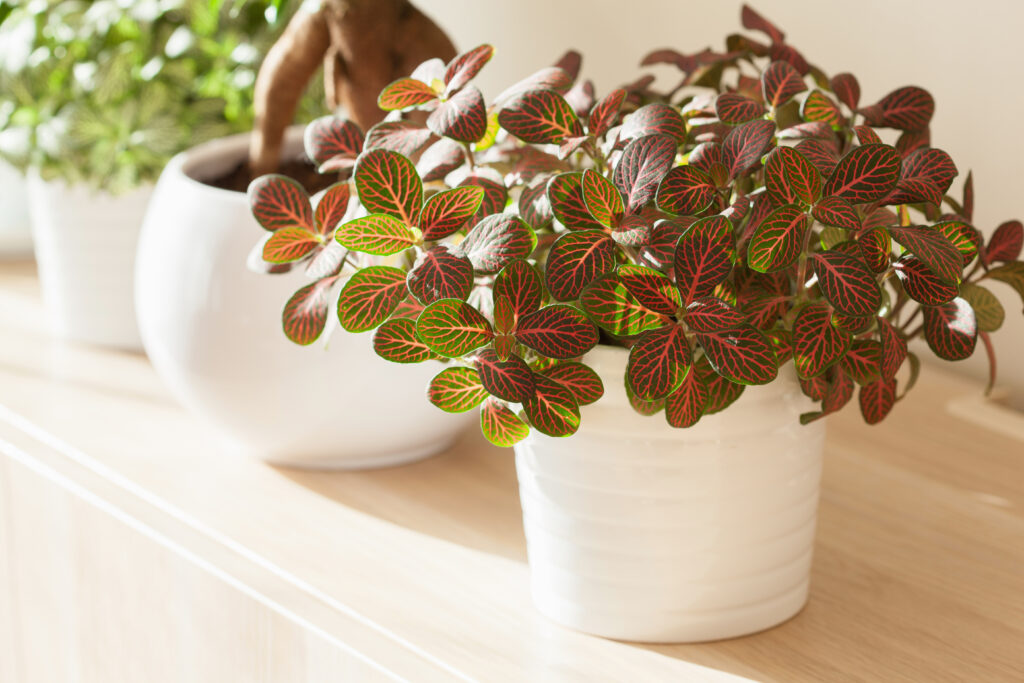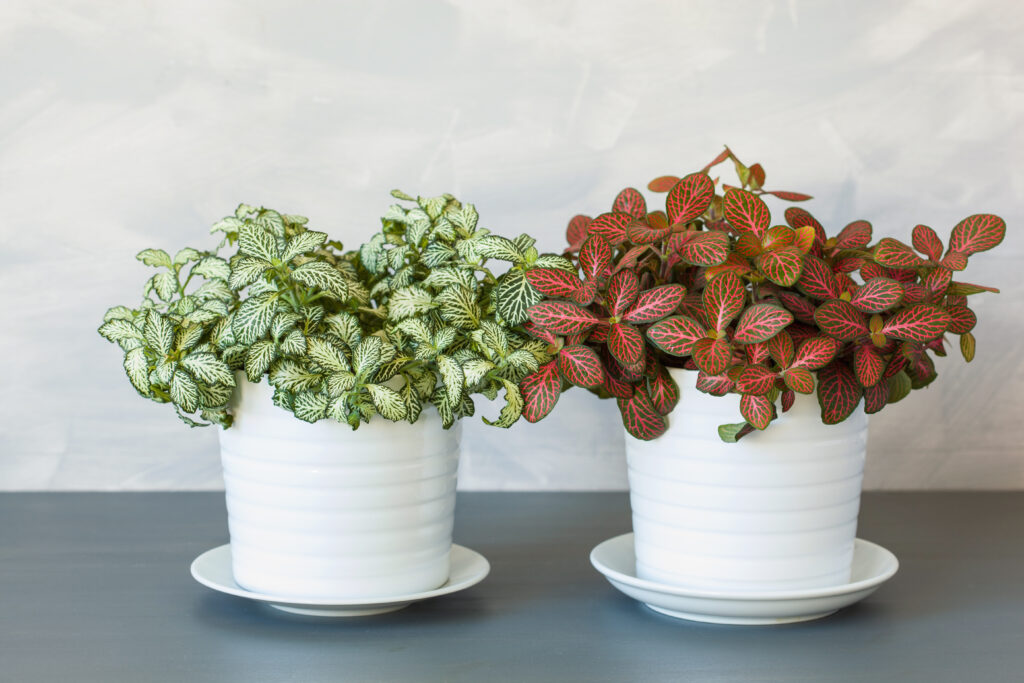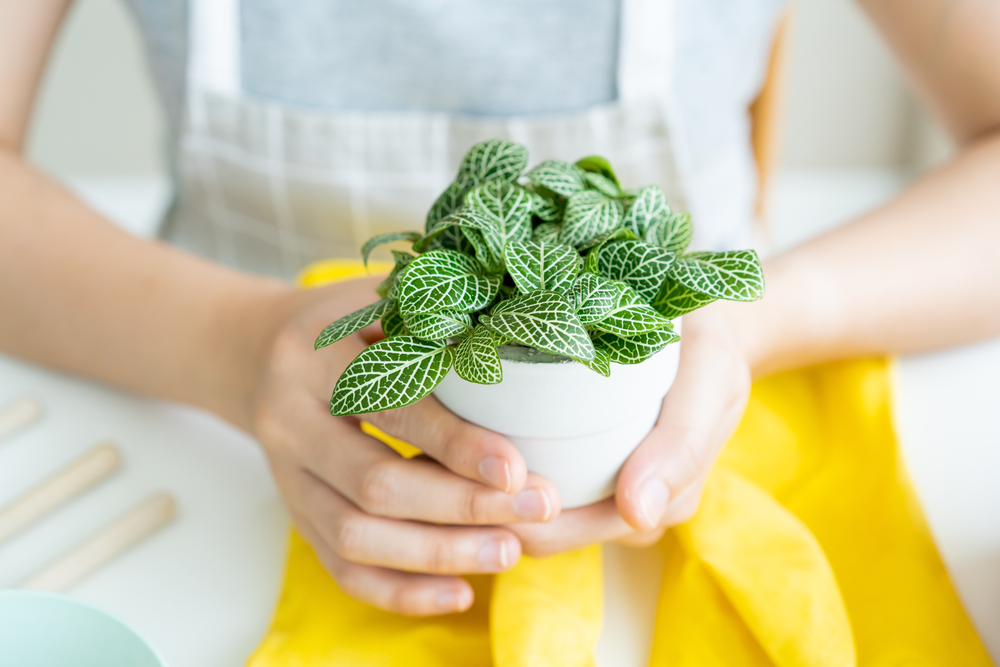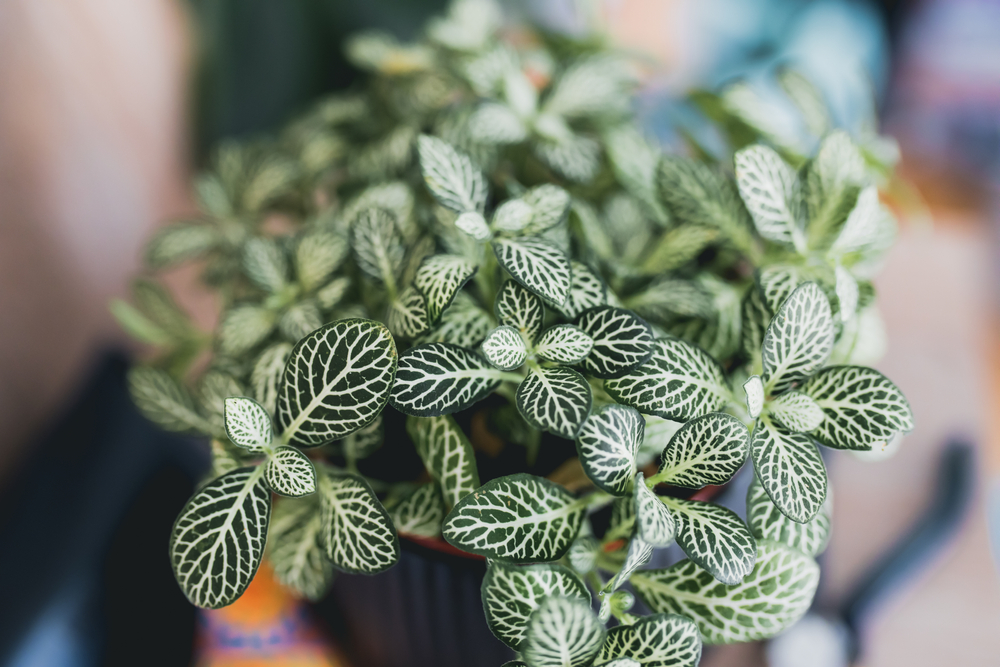Nerve plants, also known as Fittonia, are popular houseplants because of their beautiful foliage and low maintenance requirements. However, drooping nerve plants can be a common problem for plant owners, especially after watering.
Understanding nerve plants is essential to preventing drooping. These plants are native to tropical rainforests and require moist soil and high humidity to thrive. They should be watered thoroughly when the soil is dry, but overwatering can lead to root rot and other issues.
Recognizing nerve plant drooping is crucial to fixing the problem. Drooping can be caused by a variety of factors, including underwatering, overwatering, insufficient light, pests, and sudden temperature drops. Fortunately, there are several steps that plant owners can take to fix drooping nerve plants and prevent future issues.
Key Takeaways on Nerve Plant Drooping After Watering
- Nerve plants require moist soil and high humidity to thrive.
- Drooping can be caused by a variety of factors, including underwatering, overwatering, insufficient light, pests, and sudden temperature drops.
- To fix drooping nerve plants, plant owners should water thoroughly, adjust lighting and temperature, and address any pest issues.
Also see:
Understanding Nerve Plant

Nerve plants (Fittonia) are tropical plants native to the rainforests of South America. They are known for their striking foliage, which features intricate patterns of veins in shades of pink, white, and green. The plants are typically small, growing to a height of only a few inches, and are often used as decorative houseplants.
Nerve plants thrive in warm, humid environments, and require consistent moisture to stay healthy. They are sensitive to changes in temperature and moisture levels, and can quickly become stressed if their needs are not met. As a result, nerve plants are often considered high-maintenance houseplants.
One of the most common issues that nerve plant owners face is drooping leaves. This can be caused by a variety of factors, including overwatering, underwatering, and exposure to extreme temperatures. In many cases, however, drooping leaves are simply a sign that the plant is not receiving enough water.
To determine if your nerve plant is drooping due to lack of water, check the soil moisture level. The soil should be consistently moist, but not waterlogged. If the soil feels dry to the touch, it is likely that the plant needs to be watered.
When watering your nerve plant, be sure to water thoroughly, allowing the water to soak into the soil. Avoid getting water on the leaves, as this can cause damage or promote the growth of mold or mildew.
In addition to proper watering, nerve plants also require high humidity levels to thrive. To increase humidity around your plant, consider using a humidifier or placing a tray of water near the plant. You can also mist the leaves with water to provide additional moisture.
Recognizing Nerve Plant Drooping
Nerve plants are known for their beautiful, vibrant leaves. However, like any other plant, they can experience drooping or wilting after watering. It’s important to recognize this issue and take action promptly to prevent any further damage.
Signs of Drooping
The most obvious sign of drooping or wilting in a nerve plant is the leaves appearing limp and lifeless. This can happen to a few leaves or the entire plant. The plant may also appear to be leaning to one side or the other.
Another sign of drooping is leaf drop. The plant may shed leaves that are no longer able to receive enough water and nutrients. If left untreated, the drooping can become severe and lead to the death of the plant.
Causes of Drooping

Several factors can cause nerve plant drooping after watering. The most common cause is overwatering. If the soil is too moist, the roots can’t absorb oxygen properly, leading to root rot and drooping.
Underwatering is another cause of drooping. If the soil is too dry, the plant can’t get enough water, leading to dehydration and drooping.
Other factors that can cause drooping include:
- Poor drainage
- Lack of humidity
- Pests or diseases
What to Do
The first step in treating nerve plant drooping is to identify the cause. If the soil is too moist, stop watering the plant for a few days until the soil dries out. If the soil is too dry, water the plant thoroughly and ensure that the soil remains moist.
If poor drainage is the issue, repot the plant in a pot with better drainage. If the plant lacks humidity, consider placing a humidifier nearby or misting the plant regularly.
If pests or diseases are the issue, treat the plant with an appropriate insecticide or fungicide.
In conclusion, recognizing nerve plant drooping after watering is crucial to maintaining the health of the plant. By identifying the cause and taking appropriate action, you can prevent further damage and help your plant thrive.
Nerve Plant Drooping After Watering – 6 Common Problems

Nerve plants are known for their beautiful foliage and vibrant colors. However, sometimes they can droop after watering, which can be a sign of an underlying issue. Here are some common reasons why a nerve plant may droop after watering:
1. Overwatering
Overwatering is one of the most common causes of nerve plant drooping. When the plant is overwatered, the soil becomes soggy, and the roots can’t get enough oxygen. This can lead to root rot, which can cause the plant to wilt and droop. To avoid overwatering, make sure the soil is well-draining and allow it to dry out between waterings.
2. Underwatering
Underwatering can also cause nerve plant drooping. When the plant doesn’t get enough water, the leaves will wilt and droop. To avoid underwatering, make sure the soil is moist and water the plant when the top inch of soil is dry.
3. Light
Nerve plants prefer bright, indirect light. If the plant is not getting enough light, it may droop. On the other hand, if the plant is getting too much direct sunlight, it can also cause the leaves to droop. Make sure the plant is getting the right amount of light for its needs.
4. Humidity
Nerve plants prefer a humid environment. If the air is too dry, the leaves can droop. To increase humidity, mist the plant regularly, place a humidity tray nearby, or use a room humidifier.
5. Soil
The soil can also affect the health of a nerve plant. If the soil is too dry, the plant may droop. On the other hand, if the soil is too soggy, it can lead to root rot and cause the plant to wilt. Use well-draining soil and allow it to dry out between waterings.
6. Pot
The pot can also affect the health of a nerve plant. If the pot doesn’t have drainage holes, the soil can become waterlogged, which can cause the plant to droop. Choose a pot with drainage holes to ensure proper drainage.
How to Fix Drooping Nerve Plant

Drooping nerve plants are a common problem that many houseplant enthusiasts face. If you notice your nerve plant drooping after watering, it’s essential to act quickly to revive it. Here are a few steps to help you fix a drooping nerve plant:
Step 1: Check the Soil Moisture
The first step to fix a drooping nerve plant is to check the soil moisture. Overwatering or underwatering can cause the plant to droop. To check the soil moisture, stick your finger about an inch deep into the soil. If the soil feels dry, it’s time to water the plant. If the soil is still moist, wait a few days before checking again.
Step 2: Water the Plant Thoroughly
When watering your nerve plant, it’s essential to water it thoroughly. Use a watering can with a small hole to avoid overwatering. Water the plant until water starts to come out of the drainage hole at the bottom of the pot. This ensures that the soil is moist all the way through.
Step 3: Increase Humidity
Nerve plants thrive in high humidity environments, like rainforests. If the air in your home is dry, it can cause the plant to droop. To increase humidity, you can use a spray bottle to mist the plant regularly or place a tray of pebbles filled with water under the pot. You can also use a humidifier to increase the humidity around the plant.
Step 4: Provide Adequate Light
Nerve plants prefer bright, indirect light. If the plant is not getting enough light, it can cause the leaves to droop. During the summer, you can move the plant outside to a shaded area. During the winter, you can use LED grow lights to provide adequate light.
Step 5: Check for Pests and Diseases
Pests and diseases can also cause nerve plants to droop. Check the plant regularly for any signs of pests like spider mites or mealybugs. If you notice any pests, you can use neem oil to get rid of them. If the plant is suffering from root rot or any other disease, repot the plant in fresh soil.
By following these steps, you can fix a drooping nerve plant and help it thrive. Remember to water the plant thoroughly, increase humidity, provide adequate light, check for pests and diseases, and repot the plant if necessary. With proper care, your nerve plant will perk up and look healthy again.
Frequently Asked Questions
How often should I water my nerve plant?
Nerve plants need to be watered frequently, but not excessively. As a tropical plant native to rainforests, Fittonia needs a lot of moisture, through moist soil and high humidity. The soil should be kept consistently moist, but not waterlogged.
The frequency of watering will depend on the humidity levels and temperature in your home, as well as the size of the pot and the type of soil. Generally, watering once a week is a good starting point, but you should adjust based on the plant’s needs.
Why is my Fittonia still droopy after watering?
If your nerve plant is still droopy after watering, it may be due to lack of humidity. The rainforest provides the nerve plant with lots of natural humidity, but central heating and air conditioning can dry the air when the plant is grown indoors, leading to drooping leaves. Mist the plant regularly or place it near a humidifier to increase humidity levels.
Can you overwater a nerve plant?
Yes, you can overwater a nerve plant. Fittonia plants love moist soil, but too much water can cause their leaves to droop.
Lots of water can damage the root tips, causing rots and stopping them from absorbing the water and nutrients they need. The leaves will droop, and you may also notice black or brown spots on the leaves.
How do I revive my nerve plant?
To revive a drooping nerve plant, you need to identify the cause of the problem. If the plant is drooping due to underwatering, water it thoroughly and ensure that the soil is always moist.
If the plant is drooping due to overwatering, let the soil dry out a bit before watering again. If the plant is drooping due to lack of humidity, increase the humidity levels in the room by misting the plant or using a humidifier.
Why is my Fittonia drooping?
Fittonia plants can droop for several reasons, including underwatering, overwatering, lack of humidity, and too much direct sunlight. It’s important to identify the cause of the problem before taking any action.
How to save overwatered Fittonia?
If your Fittonia plant is overwatered, the first step is to let the soil dry out. Once the soil is dry, water the plant thoroughly and ensure that the soil is moist but not waterlogged. You may also need to repot the plant in fresh, well-draining soil to prevent root rot.

Hey, I’m Lisa and I’ve been an avid gardener for over 30 years. I love writing, talking and living in the garden! Feel free to connect with me on my socials below


